

Dependence on tourism devastates Maldives; need to look for sustainable revival strategy
India’s timely help to the maldives is not without detractors, especially the political opposition that has been protesting the presence of the indian military, writes n chandra mohan for south asia monitor.

Like the rest of South Asia, the Maldives, too, have been adversely impacted by the economic fallout of COVID-19. This small archipelagic island country’s output of goods and services or GDP is projected to shrink by a massive 30 percent this year, according to Fitch Ratings, because of its dependence on tourism that has had to shut down to battle the viral pandemic.
Tourism accounts for 56.6 percent of its GDP, 59.6 percent of employment and 48.5 percent of the government’s revenues excluding grants, according to the World Bank. The hit to the exchequer due to COVID-19 will be known when the USD 2.5 billion budget is presented on November 9. Tourist arrivals have gradually picked up since borders reopened in mid-July.
Tourism - the mainstay of the economy
International commercial flights have resumed. The first air bubble arrangement in South Asia was created by India with the Maldives on August 13. Single weekly direct flights of India’s national flagship carrier Air India to the Maldives have begun from Thiruvananthapuram, the capital of Kerala state. Around 37, 468 tourists visited the island nation between mid-July and October 28, while 100,000 arrivals have been targeted by the year-end.
“The Maldives needs tourism. When tourism stops, everything stops,” bluntly stated Maldives’ Tourism Minister Dr. Abdullah Mausoom.
However, a sustainable rebound in tourism is an iffy proposition and is predicated on a virus containment strategy that will encourage more footfalls. The bad news in this regard is that infections are surging domestically. Maldives’ Health Emergency Operations Centre recently confirmed a significant number of COVID-19 cases in the resort island of Kandima in the Dh Atoll despite stringent health measures in place and schemes like ‘one island one resort’ to encourage socially distanced vacations.
The pandemic thus poses serious challenges to the government’s drive to kick-start tourism to boost overall economic growth. The Maldives’ economic condition thus is fragile and needs assistance.
India's timely economic help
The prompt response from the neighbourhood in this regard is indeed noteworthy. India, with whom it shares long-standing ethnic, linguistic, cultural, religious, and commercial links, loosened its purse strings to provide timely budgetary assistance and generous lines of credit to help build its infrastructure and cope with COVID-19.
In his address to the SAARC (South Asian Association for Regional Cooperation) foreign ministers' meeting, Maldives’ Foreign Minister Abdulla Shahid acknowledged that the USD 250 million pledged by India as the largest support package announced by a bilateral partner during COVID-19.
To be sure, India responded in the past as well to help the Maldives, especially during the coup attempt in 1988, the Tsunami of 2004, and the drinking water crisis in 2014.
When COVID-19 struck, India sent in rapid response medical teams and supplied essential medicines through Operation Sanjeevani. Financial assistance of USD 250 million provided in September was through investments by the State Bank of India in Maldives government bonds on concessional terms. A currency swap of USD 150 million was approved by the Reserve Bank of India to help the Maldives - all of which will help it to deal with the economic crisis inflicted by the virus.
India is also the single largest donor of Maldives with USD 1.4 billion received in 2018 and cash grants for various community projects.
At a bilateral meeting of foreign ministers in August, India’s External Affairs minister S Jaishankar extended a fresh line of credit of USD 400 million and a grant of USD 100 million to help build a sea bridge to connect three islands with the capital Male, which will generate employment and strengthen the economy. India’s foreign secretary Harsh Vardhan Shringla is expected to visit Maldives on November 9-10 and is bound to follow up the progress on all these projects.
However, India’s timely help to the Maldives is not without detractors, especially the political opposition that has been protesting the presence of the Indian military. Its aid is transparent and serves the developmental interests of Maldives. With regard to the infrastructure project linking Male to three islands, for instance, the Maldivian finance ministry announced how 65-70 percent of components will be sourced by India, facilitating participation by the Maldivian businesses and services.
Time to plan for the future
There will also be an international tendering process for the contract, according to N Sathiya Moorthy of the Observer Research Foundation. The budget will clearly indicate how the island nation will cope with the ravages of COVID-19. With around 22,000 Maldivians left without jobs, extending monthly income support for some more time is imperative. If the spread of the virus cannot be checked, tourist arrivals will taper off and recessionary conditions will persist.
Looking into the future, a more sustainable revival strategy would be to diversify away from the dependence on a single industry. Saline soil conditions and scarcity of arable land limit the possibilities in agriculture.
Participating in labour-intensive manufacturing activities for exports to the world market perhaps can be explored by improving local skills.
(The writer is an economics and business commentator based in New Delhi. The views expressed are personal. He can be contacted at [email protected])
Related Posts
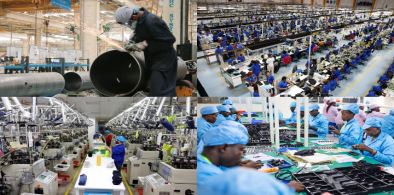

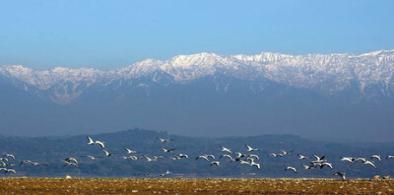
Post a Comment
Vice Admiral Shekhar Sinha (retd.) former FOC-in-C, Western Naval Command speaks with Col Anil Bhat (retd.) on the Indian Navy’s Indian Ocean challenges and outreach | SAM Conversation

Beena Sarwar, Boston-based Pakistani journalist and South Asian peace activist speaks with Tarun Basu | SAM Conversation

Frank Islam speaks with Irtif Lone, a startup ecosystem builder in Jammu and Kashmir, India on the region's growing entrepreneurshp culture | Washington Calling

Frank Islam speaks with Mateen Haider, Islamabad-based analyst and anchor on the Pakistan situation post elections | Washington Calling

In Indian capital, Muslim home cooks stir up a culinary revolution | Reimagining India

Transwomen serve inclusion on a plate

Gandhi, 1918 flu pandemic and COVID19

Faith and judiciary: A case from Pakistan

Geetanjali Shree first Indian to win International Booker Prize: Will it open doors for translations of great literature in all Indian languages?
Newsletter Subscription

- Latest News
- Antigua & Barbuda
- The Bahamas
- British Virgin Islands
- Canadian Residents Outbound
- Caribbean Long Term
- Cayman Islands
- Cruise Visitors Caribbean
- Dominican Republic
- El Salvador
- Global (UNWTO)
- The Maldives
- Puerto Rico
- Saint Lucia
- St Kitts & Nevis
- St. Vincent & The Grenadines
- Sint Maarten
- Trinidad and Tobago
- Turks & Caicos
- UK Residents Outbound
- US International Outbound
- US Consumer Confidence Index

Eurasia Review
A Journal of Analysis and News
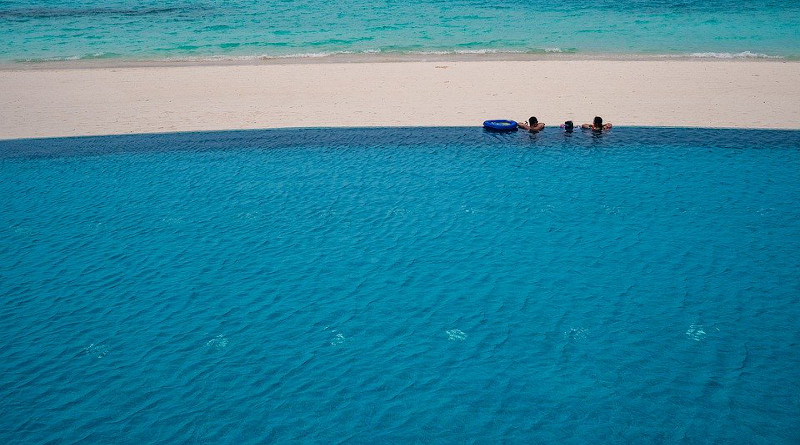
Dependence On Tourism Devastates Maldives: Need To Look For Sustainable Revival Strategy – Analysis
By South Asia Monitor
By N Chandra Mohan*
Like the rest of South Asia, the Maldives, too, have been adversely impacted by the economic fallout of COVID-19. This small archipelagic island country’s output of goods and services or GDP is projected to shrink by a massive 30 percent this year, according to Fitch Ratings, because of its dependence on tourism that has had to shut down to battle the viral pandemic.
Tourism accounts for 56.6 percent of its GDP, 59.6 percent of employment and 48.5 percent of the government’s revenues excluding grants, according to the World Bank. The hit to the exchequer due to COVID-19 will be known when the USD 2.5 billion budget is presented on November 9. Tourist arrivals have gradually picked up since borders reopened in mid-July.
Tourism – the mainstay of the economy
International commercial flights have resumed. The first air bubble arrangement in South Asia was created by India with the Maldives on August 13. Single weekly direct flights of India’s national flagship carrier Air India to the Maldives have begun from Thiruvananthapuram, the capital of Kerala state. Around 37, 468 tourists visited the island nation between mid-July and October 28, while 100,000 arrivals have been targeted by the year-end.
“The Maldives needs tourism. When tourism stops, everything stops,” bluntly stated Maldives’ Tourism Minister Dr. Abdullah Mausoom.
However, a sustainable rebound in tourism is an iffy proposition and is predicated on a virus containment strategy that will encourage more footfalls. The bad news in this regard is that infections are surging domestically. Maldives’ Health Emergency Operations Centre recently confirmed a significant number of COVID-19 cases in the resort island of Kandima in the Dh Atoll despite stringent health measures in place and schemes like ‘one island one resort’ to encourage socially distanced vacations.
The pandemic thus poses serious challenges to the government’s drive to kick-start tourism to boost overall economic growth. The Maldives’ economic condition thus is fragile and needs assistance.
India’s timely economic help
The prompt response from the neighbourhood in this regard is indeed noteworthy. India, with whom it shares long-standing ethnic, linguistic, cultural, religious, and commercial links, loosened its purse strings to provide timely budgetary assistance and generous lines of credit to help build its infrastructure and cope with COVID-19.
In his address to the SAARC (South Asian Association for Regional Cooperation) foreign ministers’ meeting, Maldives’ Foreign Minister Abdulla Shahid acknowledged that the USD 250 million pledged by India as the largest support package announced by a bilateral partner during COVID-19.
To be sure, India responded in the past as well to help the Maldives, especially during the coup attempt in 1988, the Tsunami of 2004, and the drinking water crisis in 2014.
When COVID-19 struck, India sent in rapid response medical teams and supplied essential medicines through Operation Sanjeevani. Financial assistance of USD 250 million provided in September was through investments by the State Bank of India in Maldives government bonds on concessional terms. A currency swap of USD 150 million was approved by the Reserve Bank of India to help the Maldives – all of which will help it to deal with the economic crisis inflicted by the virus.
India is also the single largest donor of Maldives with USD 1.4 billion received in 2018 and cash grants for various community projects.
At a bilateral meeting of foreign ministers in August, India’s External Affairs minister S Jaishankar extended a fresh line of credit of USD 400 million and a grant of USD 100 million to help build a sea bridge to connect three islands with the capital Male, which will generate employment and strengthen the economy. India’s foreign secretary Harsh Vardhan Shringla is expected to visit Maldives on November 9-10 and is bound to follow up the progress on all these projects.
However, India’s timely help to the Maldives is not without detractors, especially the political opposition that has been protesting the presence of the Indian military. Its aid is transparent and serves the developmental interests of Maldives. With regard to the infrastructure project linking Male to three islands, for instance, the Maldivian finance ministry announced how 65-70 percent of components will be sourced by India, facilitating participation by the Maldivian businesses and services.
Time to plan for the future
There will also be an international tendering process for the contract, according to N Sathiya Moorthy of the Observer Research Foundation. The budget will clearly indicate how the island nation will cope with the ravages of COVID-19. With around 22,000 Maldivians left without jobs, extending monthly income support for some more time is imperative. If the spread of the virus cannot be checked, tourist arrivals will taper off and recessionary conditions will persist.
Looking into the future, a more sustainable revival strategy would be to diversify away from the dependence on a single industry. Saline soil conditions and scarcity of arable land limit the possibilities in agriculture.
Participating in labour-intensive manufacturing activities for exports to the world market perhaps can be explored by improving local skills.
*About the author: The writer is an economics and business commentator based in New Delhi. The views expressed are personal. He can be contacted at [email protected]
Source: This article was published by South Asia Monitor
- ← Growing Sino-American Military Rivalry – Interview
- Robert Reich: Can Biden Heal America When Trump And His Allies Don’t Want It Healed? – OpEd →

South Asia Monitor
To create a more credible and empathetic knowledge bank on the South Asian region, SPS curates the South Asia Monitor ( www.southasiamonitor.org ), an independent web journal and online resource dealing with strategic, political, security, cultural and economic issues about, pertaining to and of consequence to South Asia and the Indo-Pacific region. Developed for South Asia watchers across the globe or those looking for in-depth knowledge, reliable resource and documentation on this region, the site features exclusive commentaries, insightful analyses, interviews and reviews contributed by strategic experts, diplomats, journalists, analysts, researchers and students from not only this region but all over the world. It also aggregates news, views commentary content related to the region and the extended neighbourhood.
Leave a Reply Cancel reply
Your email address will not be published. Required fields are marked *

Beyond Tourism: The evolving narrative of Maldives’ growth
Faris hadad-zervos.

The Covid-19 pandemic brought global tourism and travel to a standstill. Although the health impact of the pandemic has been fairly contained in Maldives, its economic consequences for the tourism-dependent economy have been devastating. To contain the spread of the virus, the country closed its borders for the first time in history, between March 27 and July 15, 2020. This led to a sudden stop in tourism – the main driver of growth, jobs, and revenues.
But with the virus now contained and more than two thirds of the country’s population fully vaccinated, tourists have been steadily returning since late 2020. After an 18-year record low visitor number of just 555,494 in 2020, the country attracted 1.3 million visitors in 2021. Maldives has also successfully attracted tourists from new and emerging markets to supplement shortfalls in arrivals from previously high-performing markets like China. India and Russia were the leading markets in 2021, accounting for 22.1 percent and 16.8 percent of total tourists, respectively.
There is no doubt that tourism, which propelled Maldives into the ranks of middle-income countries and enabled it to narrow the gap with more advanced economies, has been key to the country’s development success. As the sector rebounds, it will continue to be vital to its future.
But disruptions stemming from the pandemic and new shocks from the war in Ukraine highlight the risks associated with reliance on a single economic activity. Tourism and related services directly contribute to 40 percent of the economy, 80 percent of exports and half of total revenues. With most Maldivians dependent on tourism and fisheries for their livelihoods, any impact on tourism will be felt across all corners of the archipelago.
The good news is that young, innovative Maldivians are helping build a more diverse and dynamic economy of the future.
When the Maldives imposed a lockdown in April 2020 to stop the spread of Covid-19, Siyah Khaleel and a group of his friends were stuck on a remote island. They were looking for ways to get back to Male, but they could not find any online. That’s when it hit them: the country’s sea transport industry, which is made up of numerous individual players, needed a solution to centralize bookings for the different services.
OdiApp was born from that experience. With the app, travellers can book tickets from a transport service provider of their choice with just a click of a button. I was impressed with these local solutions Maldivian entrepreneurs like Siyah Khaleel and his team are designing for local problems. Meeting them and other entrepreneurs during a recent High-Level Roundtable on Digital Development in Male showed me the potential Maldives’ services-led economy has in expanding beyond tourism into emerging industries. This evolution will be made possible by the digital technologies of today and tomorrow.
As the country emerges from the unprecedented impacts of the pandemic and new shocks linked to global conflict, economic diversification is now more important than ever.
With the demand for high-speed internet and contactless services on the rise due to the pandemic, digital technologies have the potential to unlock new markets for Maldivians across the archipelago and enable the government to provide better services. Recognizing this potential, the Government Strategic Action Plan 2019-2023 outlined an ambitious agenda for digital development as a key step towards economic diversification. Already, over 60 percent of households use the internet. High-speed fiber internet is available to more than 70 islands and 80 percent of the population. However, 20 percent of the population lives on outer islands and atolls that lack fixed broadband, which constrains access to digital services, transactions, and economic opportunities.
The importance of fostering digital development and diversifying the Maldives’ economy was front and center at the High-Level Roundtable on Digital Development where young Maldivian entrepreneurs like Siyah and others demonstrated how they are innovating and creating competitive businesses for the digital economy.
What can Maldives do to ensure that future generations are able to follow in Siyah’s footsteps to create opportunities and add value to the economy?
To close the existing digital divide, investments in digital infrastructure and technologies are needed to reduce internet and mobile costs, and to offer better services. Improving digital literacy can allow the country to address the issue of low adoption of technologies like e-wallets and mobile payment platforms, prepare the young generation for jobs in the ICT sector, and allow Small and Medium Enterprises (SMEs) access new markets and ways of financing. At the same time, laws on electronic transactions and combating cybercrime are instrumental for digitalizing government and commercial services, and for protecting users.
While digital development is one key area for the World Bank’s collaboration with the Government on Maldives’ recovery and future growth, there is so much more the country can do to better rebuild for green, resilient, and inclusive growth in the post-Covid era. Policies that encourage entrepreneurship and investments in new and emerging sectors such as renewable energy, enable SMEs access funds and expand their market base, get more young Maldivians especially women to work, and create a level-playing field for the private sector are just as important to maintain the Maldives’ services-led recovery and supercharge the country’s development for future generations.
This blogpost was originally published as an Op-Ed in The Edition on March 21, 2022.
- COVID-19 (coronavirus)
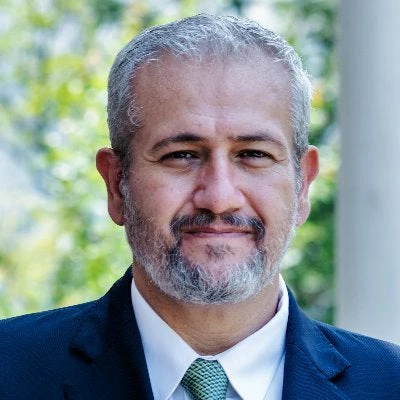
World Bank Country Director for Maldives, Nepal and Sri Lanka
Join the Conversation
- Share on mail
- comments added
- Get Involved
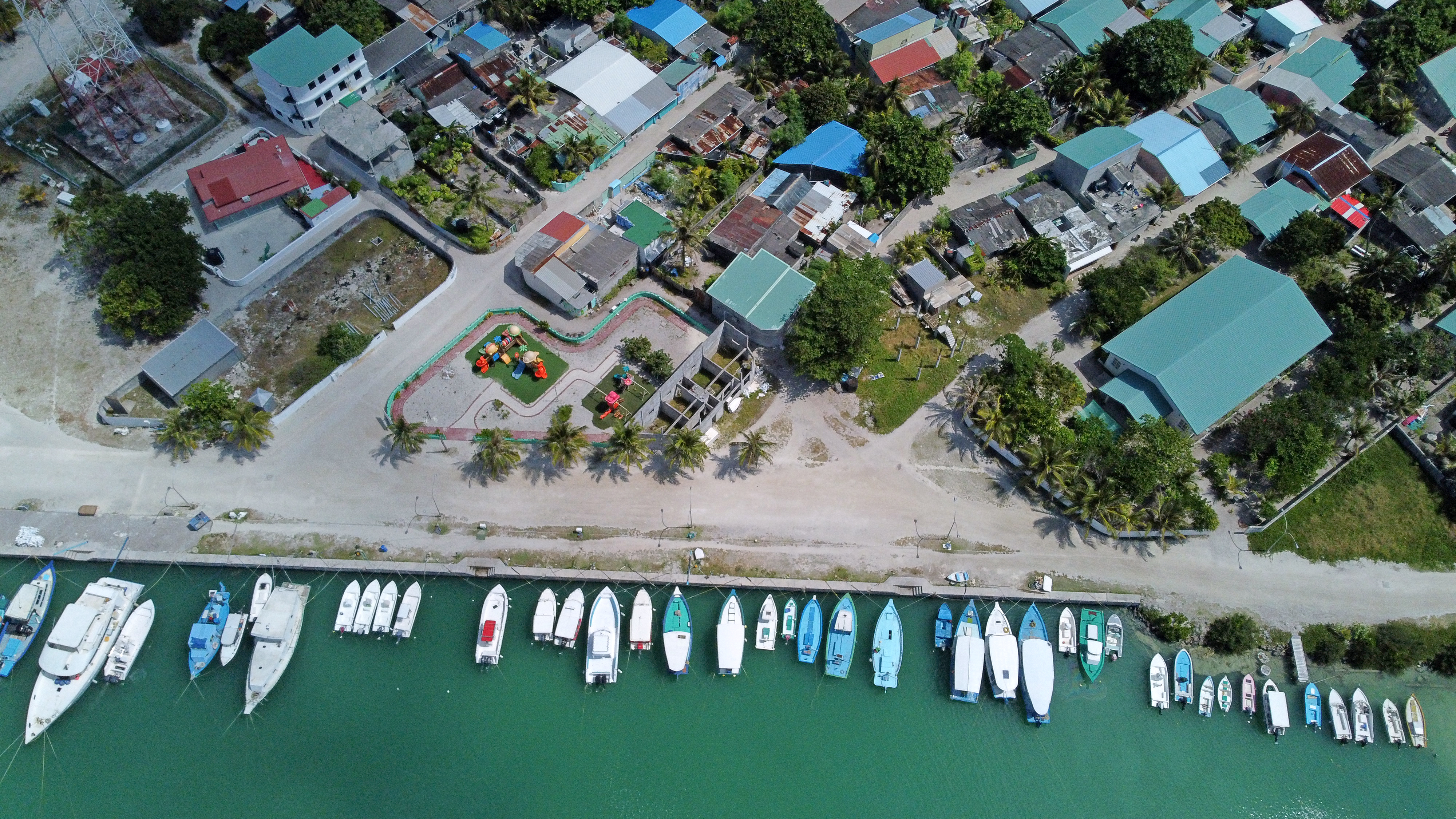
Reimagining Tourism
This project aims to diversify the tourism offer in the Maldives by targeting the actors involved and ideal market of the guest house segment. It will leverage community-led conservation of natural ecosystems and cultural heritage as a novel tourism product to facilitate a bigger role for local councils in tourism planning. This will establish formal linkages in the tourism sector with traditional knowledge and livelihoods, leading to the creation of avenues for greater participation for women and youth.
This project will facilitate pathways and provide incentives for small and medium enterprises (i.e., guesthouses and other complimentary enterprises) to pursue and maximize social, economic and environmental benefits. This will be achieved through three outputs: focusing on integration of tourism development into island development planning processes; acceleration of digitization efforts within the guesthouse tourism segment, with a focus on enhancing access to information and marketing of local island tourism offers; and prototyping of sustainable business models for local tourism.
As a tourism dependent country, the economy of the Maldives was severely affected due to the COVID-19 pandemic. With the complete shutdown of tourism for three months in 2020, forecasts by the Ministry of Finance anticipated a contraction in GDP in the range of -11.5 to -29.7 percent in a worst-case scenario for 2020. The Rapid Livelihood Assessment on the impact of the COVID-19 crisis in the Maldives reveals that the halt in tourism impacted the lives of tourism industry workers gravely and had a drastic spillover effect on construction, transport, wholesale, and retail businesses. Among the multiple segments of tourism impacted, guesthouses were especially hit hard.
Currently the guesthouse segment of 616 establishments is estimated to be worth MVR 2.2 billion by the end of 2019, which contributes an estimated 4% to the tertiary sector economic activity. The guesthouse segment is dominated by Small and Medium Enterprises (SMEs) with majority local ownership. According to a recent study by Guesthouse Association of Maldives (GAM) 36% of guesthouses are financed through personal loans and more than half through loan facilities. With the impact of COVID-19, guesthouses are expected to incur an aggregate loss of $28.9 million between April to September. This is a significant shock to the economies of the guesthouse dependent islands. GAM indicated that guest houses provide 80% of direct employment benefits to communities in which they operate. The SMEs in the islands provide complimentary services ranging from transport, recreation, logistics etc. to support these guesthouses.
The ongoing pandemic has exposed structural vulnerabilities in the tourism industry which affect both supply and demand factors. This, coupled with the country’s increasing exposure to climate change related risks, obligates the country to pivot the current trajectory of its tourism industry to a more sustainable one. This project aspires to contribute to the recovery of the Maldivian tourism industry, while using the opportunity to make it more resilient through investments to ensure sustainability and inclusivity.
Major Achievements
- Launching of the tourism website (islands.mv) to market local island tourism opportunities and services. It has given all 189 inhabited islands of the Maldives to freely market their tourism offer.
Project Outcome
This project aims to:
Build capacities and establish formal systems to integrate development of sustainable tourism into island planning efforts;
Enhance access to information and market local island tourism offers through support. In doing so, it digitally maps and markets the natural and cultural ecosystem of the Maldives as unique product offerings from guest house on the main marketing portal for Maldivian tourism;
Prototype sustainable business models for local tourism, including through the offer of regional and sub regional product offers, reskilling Maldivians for green/blue jobs in the industry, establishment cross sector value chains focusing on women entrepreneurs, and creation of sustainability standards for the guesthouse segment.
GESI Component:
- Re-skilling and training programme: this programme caters to localized training needs in particular for women and youth in Laamu Atoll. This programme provides equal opportunities for women to branch out to different sectors of work.
Business Incubator Programme: facilitates access to finance, banking services, and learning for entrepreneurs seeking to contribute to the tourism sector value chains- there is a focus on engaging women entrepreneurs. By facilitating and encouraging women to start their own business ventures, it increased the number of women entrepreneurs in Laamu Atoll.
- Personal Finance
- Today's Paper
- Partner Content
- Entertainment
- Social Viral
- Pro Kabaddi League
Maldives as tourist hub: Its history and what lies ahead for island nation
Maldives, with a population of 550,000 people dispersed across 185 islands, has become a popular tourist hub in the last five decades and today attracts about 25% of its gdp directly from tourism.
)
Maldives' annual GDP is largely driven by its tourism sector, which accounts for about 25 per cent of total share.
Listen to This Article
Maldives' history as tourist destination, maldives tourism: boon and a bane, maldives' envoy summoned by govt amid diplomatic row over ministers' remark, easemytrip suspends flight bookings to maldives over tourism row with india, live: amid maldives row, makemytrip launches 'beaches of india' campaign, iit bombay: 85 students secure salary packages worth over rs 1 crore, meta enables 'link history' on facebook: what it is and how-to disable it, earth's rotation day 2023: date, history, importance, and more facts, maldives prez muizzu arrives in china, set to sign several agreements, with a week to go for iowa's caucuses, donald trump appears strong, runway at tokyo's haneda airport reopens a week after fatal collision, iphone sales slump in china, volumes to decline further, says jefferies, maldives may 'disappear' by 2100.
Don't miss the most important news and views of the day. Get them on our Telegram channel
First Published: Jan 08 2024 | 12:35 PM IST
Explore News
- Suzlon Energy Share Price Adani Enterprises Share Price Adani Power Share Price IRFC Share Price Tata Motors Share Price Tata Steel Share Price Yes Bank Share Price Infosys Share Price SBI Share Price Tata Power Share Price HDFC Bank Share Price
- Latest News Company News Market News India News Politics News Cricket News Personal Finance Technology News World News Industry News Education News Opinion Shows Economy News Lifestyle News Health News
- Today's Paper About Us T&C Privacy Policy Cookie Policy Disclaimer Investor Communication GST registration number List Compliance Contact Us Advertise with Us Sitemap Subscribe Careers BS Apps
- Budget 2024 Lok Sabha Election 2024 IPL 2024 Pro Kabaddi League IPL Points Table 2024
- REAL ESTATE
- HOSPITALITY
- Hospitality

Weighing the Downsides of Tourism Dependence in the Maldives
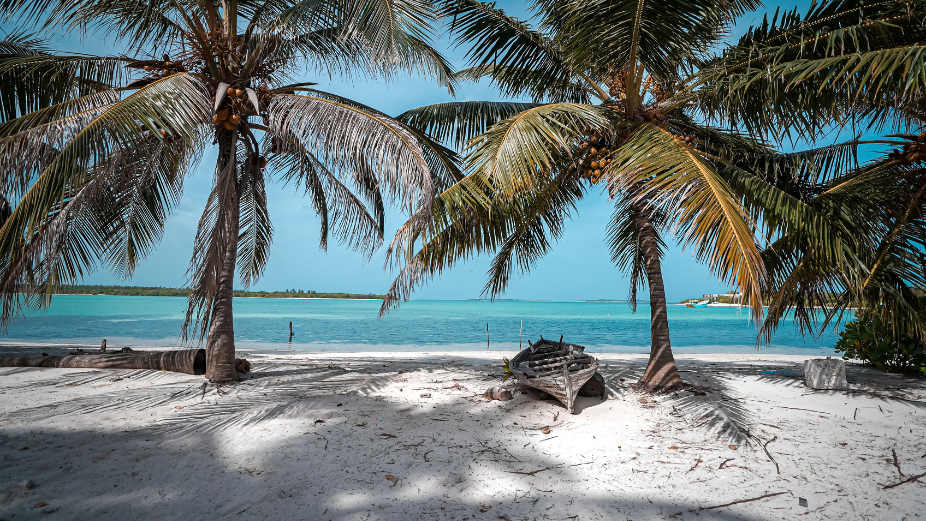
While the tourism sector plays a critical role in the global economy, an over-dependence on it can pose substantial challenges, especially for smaller nations like the Maldives, where tourism is the predominant support for their GDP.
Economic Challenges
Nations heavily dependent on tourism face economic challenges, particularly vulnerability to fluctuations in tourism numbers due to factors like natural disasters, political unrest, or health crises. The Maldives, for example, despite welcoming tourists early during the pandemic, witnessed a notable decline in their GDP.

Additionally, a surge in tourist numbers can drive up local prices. This heightened demand might raise the cost of living, affecting the quality of life for the locals. Although local island tourism, such as guesthouses, brings substantial revenue, it can also lead to increased prices in local shops.
Seasonal Volatility
Tourism’s seasonal nature means inconsistent revenues. Such variability can strain businesses and workers, leading to financial unpredictability. In off-peak periods, resort occupancies tend to drop sharply due to reduced tourist arrivals.
Environmental Impact
Overpopulated tourist destinations can encounter environmental issues. The ramifications include increased waste, degradation of sites, and disruptions to local ecosystems. Several reclamation projects in the Maldives, intended for tourism expansion, have inflicted permanent damage on lagoons and their adjacent areas. Catering to the ever-growing tourist demand has sadly compromised the Maldives’ delicate ecosystem.
The Path Ahead: Embracing Diversification
The solution appears to lie in diversification. By investing in sustainable industries such as renewable energy, technology, and sustainable agriculture, reliance on tourism can be mitigated. Branching out into manufacturing or other service sectors might also counterbalance the heavy dependence on tourism. The Maldives already champions sustainability. The question remains: Can they broaden this commitment?
While tourism offers profound economic benefits, it’s important to understand the downsides of over-reliance. An economic diversification strategy can promote stability, safeguard the environment and cultural identity, and present a broader spectrum of opportunities for the nation’s inhabitants.
RELATED ARTICLES MORE FROM AUTHOR

Simdi Ramadan Promotion 2024 Week 4 Lucky Draw Winners Announced
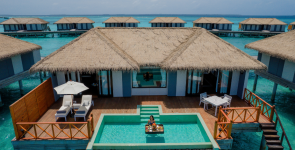
China Remains Dominant Force in Maldives Tourism
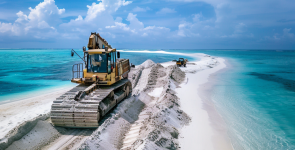
Gov’t Eases Restrictions on Sand Mining Near Protected Areas

STELCO Launches “Eid Ali” Initiative to Illuminate Maldives for Fitr-Eid

Cosmopolitan Maldives Introduces Hardys ZERO Alcohol-Free Wines
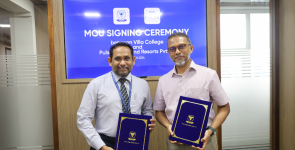
Villa College and Pulse Hotels and Resorts Forge Educational Partnership
Latest articles.

The Maldives is racing to create new land. Why are so many people concerned?
By Jesse Chase-Lubitz
Photography by Neeta Satam for Nature
24 April 2024

The island nation is expanding its territory by dredging up sediment from the ocean floor.
But scientists, former government officials and activists say such reclamation can harm marine ecosystems and make the country more vulnerable to rising seas..
This article was produced in partnership with the Pulitzer Center.
This article is also available as a pdf version.
“Sun, sand and sea.” Those are the three ingredients for tourism in the Maldives, Mohamed Shaiz’s father told him. For more than a decade, Shaiz’s family owned a successful local hotel in Addu, the Maldives’ southernmost atoll. But nearly 9 months ago, the government took away the sea.
A state-sponsored project had pulled up sediment from offshore areas and used it to extend the beach in front of the hotel by 130 metres — too far to walk for most tourists who want easy access to the ocean. Now all Shaiz sees from his hotel is a human-made desert and a slew of cancelled reservations.

The view in front of Mohamed Shaiz’s hotel on Addu Atoll.
The Maldives is an 820-kilometre-long chain of nearly 1,200 islands dotting the Indian Ocean. The nation has become one of the most popular luxury tourism destinations in the world because of its Instagrammable beaches and its advertising slogan: “the sunny side of life”. But the Maldives is also one of the countries most vulnerable to sea-level rise . With 80% of its land less than one metre above sea level, some scientists predict that the islands could be completely submerged by 2100.
In an effort to keep the country above water and thriving, the government is adopting a strategy used by many nations around the globe : land reclamation. The sandy stretch in front of Shaiz’s hotel is some of the newest land on the planet, dug up from the bottom of the ocean, sucked through pipes and piled along the coast to make more space.
Maldivian government officials say that the land is necessary to make room for economic development, especially as sea levels rise.
“This will be a doorstep, a job destination and an income-generating destination,” said President Mohamed Muizzu at the inauguration of a new land-reclamation project last December.
Critics are unconvinced, and say that the country has enough space to thrive. One swathe of land on a neighbouring island near Shaiz’s hotel was reclaimed in 2016. It remains undeveloped today. “Call me in five years,” Shaiz says, gesturing to the newly created desert in front of his hotel. “This land will be the same.”

Mohamed Shaiz and his family own a hotel on Addu Atoll.
In addition to the disputed economics, there is serious concern about the environmental damage that land reclamation can cause. Studies in the Maldives and at other sites around the world have shown that it can harm corals and seagrass, damage natural barriers, such as sand bars, mangroves and estuaries, and destroy marine habitats. “Atolls are extremely vulnerable ecosystems,” says Bregje van Wesenbeeck, the scientific director of Deltares, a Dutch research institute for water management in Delft. “Once you start to interfere with them, you’re sort of failing them.”
Expanding territories

The island of Gulhifalhu lies just west of the capital, Malé. A reclamation project started in 2020 is filling in half the atoll.
Dutch planners are often considered the founders of land reclamation, with a history of water engineering going back some 800 years. Over the centuries, land-forming projects have shaped some of the world’s major cities, including Singapore, London, New York and Miami. In recent decades, most of the reclaimed land has been in East Asia. In China, Shanghai has reclaimed 350 square kilometres — more than three times the size of Paris — over the past few decades. Colombo has added 100 km 2 in just 4 years, and 65 km 2 of Mumbai is reclaimed. A study on twenty-first-century coastal-land reclamation found that of 135 large coastal cities with populations of more than one million people, 75% had reclaimed land 1 .
With projects stretching back to 1997, the Maldives is a veteran of large-scale land reclamation. Then-minister of state for environment Abdulla Naseer said in 2018 that there are an estimated 50 islands with reclaimed land in the country, although many specialists say that’s a conservative estimate.

Source: Maldives Land and Survey Authority
Land scarcity is a key factor driving reclamation projects. Although the nation’s territory covers 90,000 km 2 , more than 99% of it is ocean. Around half a million people live on a total land area of just 300 km 2 , and the country welcomes around 1.3 million tourists each year, who contribute 80% of its gross domestic product. The capital, Malé, is one of the most densely populated parts of the planet. It’s possible to walk across the entire island in 20 minutes.

Images captured by LANDSAT satellites in 1997 and 2020 show the impact of reclamation projects on Malé and nearby islands.
Credit: Lauren Dauphin/NASA Earth Observatory
The Maldives’ 1,200 islands are all atolls — rings of coral reef that surround lagoons. When the government decides to reclaim land, it takes sand from the lagoons using boats outfitted with suction pipes, which collect sand and coral debris from the ocean floor like giant vacuum cleaners. The boat then deposits the material in a different spot, either inside or outside the atoll, to form new land. Sometimes reclamation projects fill in the entire lagoon.
Environmental damage

Heaps of sand and debris are piled up next to Shaiz’s hotel and behind the new patch of reclaimed land.
Addu Atoll, the site of Shaiz’s hotel, is about two hours south of Malé by aeroplane. Its rich coral reefs support more than 1,200 species of fish — one of the factors that led the United Nations cultural organization UNESCO to include the atoll in its World Network of Biosphere Reserves in 2020.
Some of the islands are so narrow that you can almost always see water on both sides while standing in the centre. It’s a largely quiet and rural place that feels forgotten. Yet construction marches on.
The Ministry of National Planning, Housing and Infrastructure announced the Addu Development Project in 2021, aiming to reclaim parts of the atoll and develop a road connection between existing islands. One of the ministry’s justifications is that it will provide extra housing. In the Maldives, land for houses is given away to eligible individuals and families. Addu City’s mayor, Ali Nizar, says that there have been more than 5,000 requests for housing since he entered office in 2021. “We need land,” he says. “There’s no other way.”

A reclamation project in Addu started in early 2023 and is adding land for housing, businesses and resorts.
Because Addu has one of the few international airports in the country, the hope is also that the extra land will attract international investment. “With this huge expansion project, the transformational development of Addu City has commenced,” said former president Ibrahim Mohamed Solih after inaugurating the project in June 2023.
The project has been controversial from the start. When it was announced, Ibrahim Mohamed was sitting at his desk at the Maldives’ Environmental Protection Agency (EPA) in Malé. He instantly had concerns about how the project would affect Addu. Mohamed grew up in Addu in the 1970s, taking walks through the massive seagrass beds near his home. He remembers watching stingrays surf the waves, and marvelling at fiddler crabs along the shore.
Mohamed led the environmental impact assessment (EIA) process for land-reclamation projects. When the Addu proposal landed on his desk, he contracted an environmental consulting group called Water Solutions, headquarted in Malé, to do the review.

The environmental impact report , published in February 2022, found that “the proposed reclamation is well received by the community” and that there was “high interest to implement the project based on the potential economic benefits”. But it also concluded that “long-term irreversible negative impacts will be generated from the project” for both the environment and the community, including by destroying coral reefs and seagrass meadows and harming the fishing and tourism industries.
“It was sufficient enough for the EPA to reject the project,” Mohamed says. “But they didn’t.” In May 2022, he quit his job after 10 years at the agency.
After the report came out, the EPA pushed for changes, such as a smaller area from which the project would source sand. “We tried to change the scope because we are here to protect the environment and at the same time, help development,” says the agency’s director-general, Ibrahim Naeem. “Development has to go hand in hand with environment. It should not destroy the environment,” he says.
Once the changes were made to the proposed project, Water Solutions produced a second report to assess the environmental impacts at the end of September 2022. It found that the altered project, with increased mitigation and monitoring in place, would still have irreversible negative impacts — ranging from moderate to major — on marine plants and animals, protected and sensitive areas, tourism, fisheries and recreational activities.
The assessment calculated that the cost of the damage to coral reefs alone would be between US$340 million and $851 million.
The September 2022 report does not offer explicit recommendations. “Our role is to share the information. We just wanted to present the facts,” says Ahmed Jameel, managing director of Water Solutions and one of the authors of the report. However, he adds, the assessment was not vague in its conclusions. The findings showed clearly that the project “would have an overall negative impact”, he says.
When asked about the concerns raised in the second report, Naeem says that the findings, combined with insights he received from EPA staff members who conducted anonymous reviews of the EIA, indicated that there was “enough justification in the report to approve it in terms of social benefit”.
“Any development projects in this type of environment, especially in the marine area, will have an impact,” he says, adding that “if you do reclamation properly, and if you do it wisely, I think impacts can be minimized”.

Ibrahim Mohamed previously worked for the Maldives’ Environmental Protection Agency.

The construction company Van Oord is performing the reclamation work for the Addu Atoll project.
The Dutch company responsible for doing the construction on the project, Van Oord, told Nature that environmental management for the project is overseen by the EPA and that it is working with the agency and local specialists to minimize the environmental impacts. Van Oord said it prepared a comprehensive environmental management plan “based on the mitigation measures mandated in the EIA and in compliance with international guidelines”. As part of its efforts, the company relocated coral and seagrass, and added silt screens to limit how much sediment would flow beyond the reclamation zone and affect other areas.
Van Oord, which is based in Rotterdam, the Netherlands, told Nature that “all the predicted impacts have been effectively managed by implementing a series of mitigation measures”.

A new house on Hulhumeedhoo island, to the northeast of Addu City, remains unfinished and unoccupied.
In October 2022, the EPA approved the project. But critics say the environmental costs of the reclamation are too high.
“I think their efforts are not worth the amount of destruction and the irreversible damage,” says Mohamed. “It can never be compensated properly.”
Today, the land in front of Shaiz’s hotel is the result of that decision. Yet if you speak to people on Addu, many say that land is not what they need right now; they need jobs. Much of Addu is filled with empty, unfinished homes because individuals don’t have the income or resources to build houses on their free land.
“Fifty per cent [of our land] is abandoned or empty,” says Addu’s former deputy mayor, Abdullah Thoyyib, who served the city before this reclamation project took place. “We need economic benefits and job opportunities, but that’s not happening.”
Reefs at risk

Reclamation projects in the Maldives can fill the water with sediment, threatening coral reefs.
Sitting in a resort in Addu City, Nisal Musthag places a map of Addu’s main diving spots on the table. Musthag leads diving trips for one of the two active resorts in the atoll, and he has seen some of the damage that follows reclamation projects. He points at one of the four channels between the island’s lagoon and the ocean. “This is like a cemetery now,” he says.
Musthag does three to four dives a day, six days a week. Since the most-recent reclamation, there are at least five sites he no longer takes guests to. “There are people who come back every year to dive, and this year they were like, hey, what’s happening?”

Nisal Musthag leads diving trips in Addu, but has stopped taking tourists to spots where coral was damaged by reclamation projects.
The impacts of reclamation on coral health are one of researchers’ main concerns. Some reefs die when sediment is dumped on them to create new land. But even corals that escape direct damage can be harmed because the construction work creates clouds of sediment that spread out and settle on more distant reefs. Robbed of light and nutrients, these corals can struggle to survive. The damage to reefs not only harms the ecosystem but can also leave the islands vulnerable to storms and sea-level rise, say scientists.
To reduce damage to corals during the work at Addu, the EIA required that at least 10% of existing corals be relocated outside the reclamation footprints. Van Oord says it has moved 73,000 corals to 9 recipient sites identified in conjunction with the EPA. The firm says that it “certainly surpassed the EIA requirement”.
Saleem Rasheed is one of several local divers who helped to relocate the corals. He has been monitoring them for the past year. One species, blue coral ( Heliopora coerulea ), which was moved from the outside of the atoll to the inside, died completely. “We moved 80 colonies,” says Rasheed. “They survived one week and died entirely after six months.”
“We need land. There’s no other way.”
Ali Nizar, Addu City’s mayor, supports the island’s reclamation projects.

Fathimath Saaira, social-justice advocate in Addu.
“I worry that our livelihood is being stolen from us. Our nature is being snatched away.”
Fathimath Saaira is a social-justice advocate in Addu who opposes the reclamation there.
But the rest of the species have shown resilience. Three months after relocation, they were struggling, but now, Rasheed says, they are alive and well.
Researchers have found that coral relocation can work if colonies are moved to areas with similar conditions that are protected from waves. A 2017 study in Hawaii, for example, showed that relocated corals were thriving a decade after they were moved 2 . One study on coral restoration and relocation in the Maldives measured the survival rate of 242 coral fragments 12 months after they had been moved 3 . The authors found a 70% survival rate, which they concluded was a promising result.

A solitary mangrove tree grows near newly reclaimed land in northeast Addu.
A grey heron joins others on a new sea wall built in Addu.
But coral health is only one concern for researchers studying the effects of reclamation. Mangroves, seagrass beds and coastal ecosystems can also be in harm’s way, say scientists.
Water Solutions’ second report about the Addu project, for example, projected that the reclamation process would bury about 98 hectares of seagrass meadow in the atoll’s lagoon, at an estimated economic cost of more than $3.7 million a year.
Uncertain future

Coral debris makes up much of the reclaimed land.
Not far from Shaiz’s hotel, a sea wall stretches towards the horizon, protecting a new swathe of land made of sand and coral debris. Coastal protection efforts such as the sea wall — and the changes wrought by reclamation — could have long-lasting effects on the processes that keep the islands from eroding, say researchers.
Like other atolls, the Maldivian islands evolve with the seasons, with monsoons moving sand around them. Between December and February, the winds transport sand from the northeast to the southwest. Between June and August, the pattern reverses.
“In a natural island, you will see seasonally the sand shifting with the waves and the currents,” says Mohamed. But reclamation can impede this process, he adds, by taking sand and coral debris from some locations through dredging — leaving a deficit in its wake — and depositing it where natural flows wouldn’t. Some projects add another complication by building hard barriers, such as sea walls, to protect the land, because they can stop the natural flow of sediments.
“Ecosystems can adapt if we allow them to,” says van Wesenbeeck at Deltares. “By interfering, you will kill the whole system in the end.”
Not only does this change how the island naturally maintains itself, but it can also draw development to places that are at a high risk of a storm surge or erosion, say some researchers.
“Islands can’t occur anywhere,” says Virginie Duvat, a coastal geographer at La Rochelle University in France, who has studied the effects of land reclamation in the Maldives. “If you put an island where there was naturally no island, you create vulnerable land and you will necessarily have to build strong engineered structures, breakwaters and sea walls,” she says.

A reclamation projection near Malé.
Thilafushi is an industrial island near Malé that hosts one of the country’s large rubbish dumps. New land is extending the island westward.
In a 2019 study 4 , Duvat and Alexandre Magnan, a geographer at the Institute for Sustainable Development and International Relations — Sciences Po in Paris, assessed the scale of coastal changes that humans had made to 107 inhabited islands in the Maldives between 2004–06 and 2014–16. On almost half the islands, the researchers found significant degradation in the reefs’ abilities to weaken waves and provide natural sources of sediments. One-fifth of the islands had almost entirely or entirely “lost their natural capacity to respond and adjust to ocean climate-related pressures”, the researchers say.

Source: Ref. 4
“It means that a decision you have taken one day to rely on reclaimed land will necessarily cause you to invest more money,” says Duvat. “You are locked into the engineered path for decades and decades and potentially the rest of the century.”
“If you build a levee, people will think they’re safe,” says van Wesenbeeck. “But is it wise to destroy environmental assets to create investment in an area that’s one of the most vulnerable in the world for climate change?”
The city of hope

A new housing development in Hulhumalé.
Some 550 km to the north of Addu, the capital, Malé, sits like an overpopulated postage stamp in the middle of the ocean.
Malé is tiny — less than 2 km across at its widest point — but more than 200,000 people live on the island. To relieve population pressures, the government decided in the late 1990s to start reclaiming a massive atoll next to Malé, called Hulhumalé.
Hulhumalé has become known as ‘the city of hope’ — a place that not only has room but is also protected from sea-level rise. Architects designed it with sea-level-rise scenarios until 2100 in mind. The outer edges are 2 metres above sea level, more than twice the height of Malé.

LANDSAT photos of Hulhumalé (the long island on the right) show how much reclamation projects have altered it between 1997 (left) and 2020 (right). Malé is at the bottom of the photo. Credit: Lauren Dauphin/NASA Earth Observatory
Hulhulmalé is regarded by specialists mainly as a worthwhile success for land reclamation, but critics have raised many questions about three newer projects on the western side of Malé, all of which are being built using sand from the nearby lagoon.

Malé’s busy skyline, seen from the nearby island of Vilimalé.
In 2021, Humay Abdulghafoor, a Malé-based veteran fighter against land reclamation, sued three institutional bodies of the government on the grounds that they violated an environmental-protection law. She said that a new reclamation project risked causing serious environmental, economic and cultural damage to the local community by undermining “the economic and social benefits flowing from the natural environment and biodiversity richness of the Maldives”, according to her legal case.
“By destroying the Maldives, you cannot develop it,” she says.
The case has been ongoing for years, but on 14 February, it had its first breakthrough. The country’s High Court decided to pause a dredging project near Malé. However, the next day, the Supreme Court said that this pause would cause significant financial losses and overturned the decision.
“By destroying the Maldives, you cannot develop it.”
Humay Abdulghafoor, who has sued the government over its reclamation plans.

“How we create land, and the extent to which we do it, is excessive.”
Mohamed Aslam, former minister of planning, infrastructure and housing.
Mauroof Jameel, one of five architects chosen to build Hulhumalé, also has concerns about the latest projects. Jameel, who is based in Malé, says that it made sense to reclaim land at Hulhumalé to address congestion and help to build up the economy, but he is hesitant about how fast reclamation projects are now taking place. No one knows what the long-term impacts will be, he says.
In many parts of the world, including the Maldives, land reclamation can be beneficial, say scientists. “In my opinion, it can be a positive thing around Malé,” says Duvat, because of population pressures there. But she doesn’t see as much justification in more rural, distant atolls. “In this case, I cannot see the benefits.”
Should the Maldives be creating new land?
Officials with the Maldivian government acknowledge that land reclamation can cause harm. But there is no indication that the process is slowing down. Just 3 months after Muizzu was inaugurated as president last November, he announced the biggest reclamation project the nation has ever seen —another endeavour to reclaim land near Malé on top of those already in the works. “The brand-new model city will revolutionize the country’s urban landscape, addressing housing challenges in the greater Malé region by providing 65,000 housing units,” he said in February at the World Governments Summit in Dubai, United Arab Emirates.
But many former officials urge caution. “How we create land, and the extent to which we do it, is excessive,” says Mohamed Aslam, the minister of planning, housing and infrastructure for the previous administration, the agency responsible for land-reclamation projects. He says that land is ofen reclaimed as an easy way to keep the public happy, to show them that the government is doing something.
“The easy part is building the land,” he says. “Only after that does the hard part begin.”

- Author: Jesse Chase-Lubitz
- Original photography & drone footage: Neeta Satam for Nature
- Logistical support in the Maldives: Shah Ahmed Yusuf
- Media editor: Agnese Abrusci
- Subeditor: Francisca Schultz
- Editor: Richard Monastersky
- Sengupta, D. et al . Earths Future 11 , e2022EF002927 (2023).
- Rodgers, K. S. et al . PeerJ 5 , e3346 (2017).
- Pancrazi, I., Feairheller, K., Ahmed, H., di Napoli, C. & Montefalcone, M. Diversity 15 , 1022 (2023).
- Duvat, V. K. E. & Magnan, A. K. Sci. Rep . 9 , 15129 (2019).
- Privacy Policy
- Use of cookies
- Legal notice
- Terms & Conditions
- Accessibility statement
- Manage cookie preferences
Facing dire sea level rise threat, Maldives turns to climate change solutions to survive
The islands could be 80% uninhabitable by 2050 at current global warming rates.
The Maldives are well known as a bucket list getaway. Hearing the country's name conjures up images of luxury huts overlooking an aqua blue ocean. But climate change may cross the country off the map completely.
The archipelago, which is made up of over 1,100 coral islands in the middle of the Indian Ocean, is the lowest lying nation in the world. Therefore, sea level rise caused by global climate change is an existential threat to the island nation. At the current rate of global warming, almost 80% of the Maldives could become uninhabitable by 2050, according to multiple reports from NASA and the U.S. Geological Survey.
"Our islands are slowly being inundated by the sea, one by one," Ibrahim Mohamed Solih, the president of the Maldives, told the U.N. Climate Change Conference, or COP26, earlier this week. "If we do not reverse this trend, the Maldives will cease to exist by the end of this century."
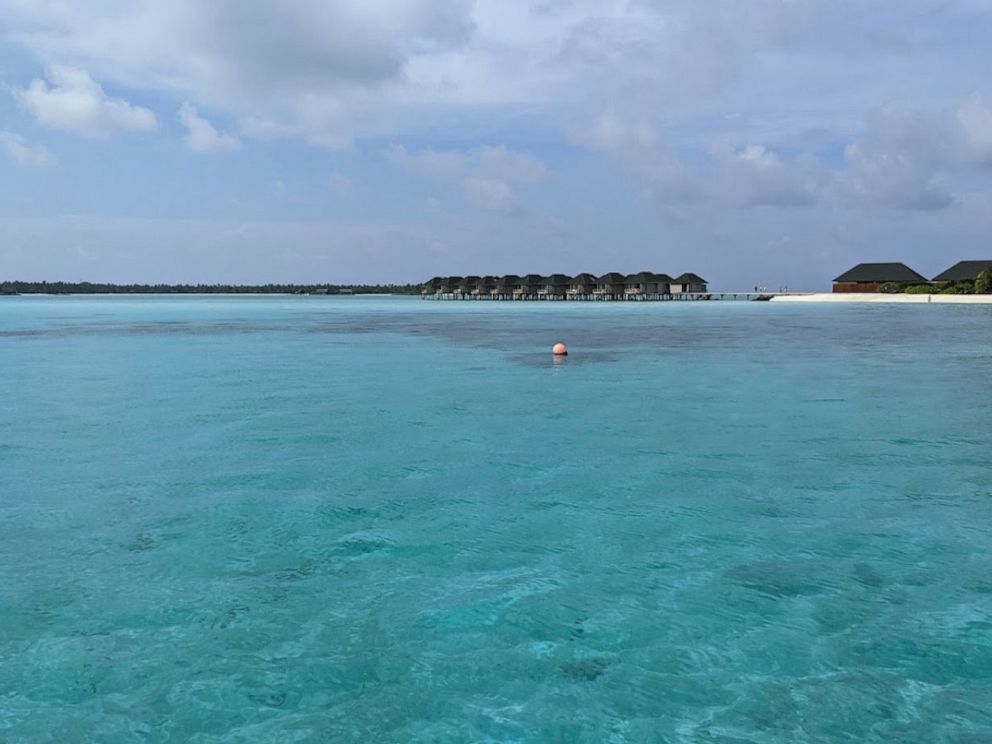
The islands that are home to local Maldivians, not the resort islands, stand to lose the most. Mohammed Nasheed, the former president of the Maldives and a leading voice for climate change equity, told ABC News that more than 90% of islands in the Maldives have severe erosion, and 97% of the country no longer has fresh groundwater.
Ibrahim Mubbasir and his family live on the island of Dhiffushi. It is suffering from severe erosion, and flooding has increased from two or three times a year to twice a month. Four years ago, the family's well became unusable because of salt water contamination, leaving them to rely on collecting rainwater. Mubbasir said they only have enough fresh water to last for three more months.
"Things that we thought would happen towards the end of the century, we are experiencing now," Aminath Shauna, the Maldives' minister of environment, climate change and technology, told ABC News' Ginger Zee.
Shauna said that more than 50% of the national budget is spent on adapting to climate change. When asked what the Maldives will look like in 2050, Shauna responded, "Are you willing to take the Maldives as climate refugees? I think that's the conversation that needs to happen."
And it's not just the Maldives. Island countries around the world have been asking developed nations for funds since 2009. Countries with the highest greenhouse gas emissions -- China, the United States and India -- are mostly responsible for the rapid sea level rise.
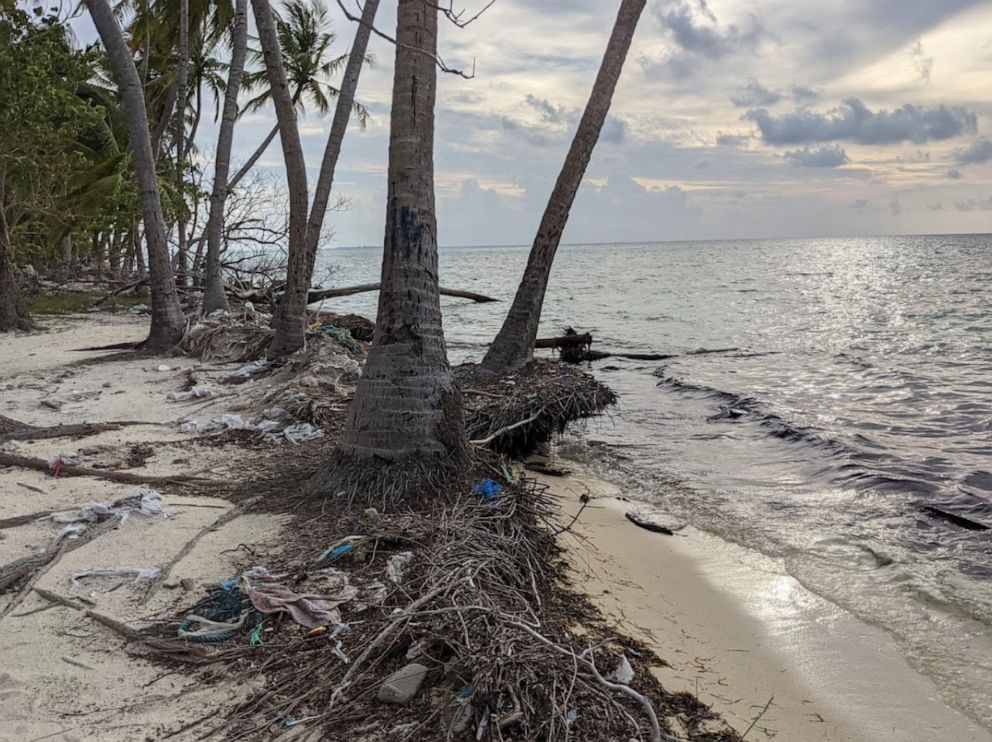
Maldives' coral reefs
At the center of the Maldives' culture are their coral reefs.
In 2016, the Maldives lost their front line of defense when a bleaching event affected about 60% of the coral reefs, according to Aya Naseem, a marine biologist and co-founder of the Maldives Coral Institute.
Without coral reefs, the islands are wide open to the rising waters. Naseem said they have one realistic choice: They need to build back and protect the reefs, "because IPCC (Intergovernmental Panel on Climate Change) is predicting that by 2050 if the temperature rises 1.5 degrees Celsius we can lose 70 to 90% of corals in the whole world."
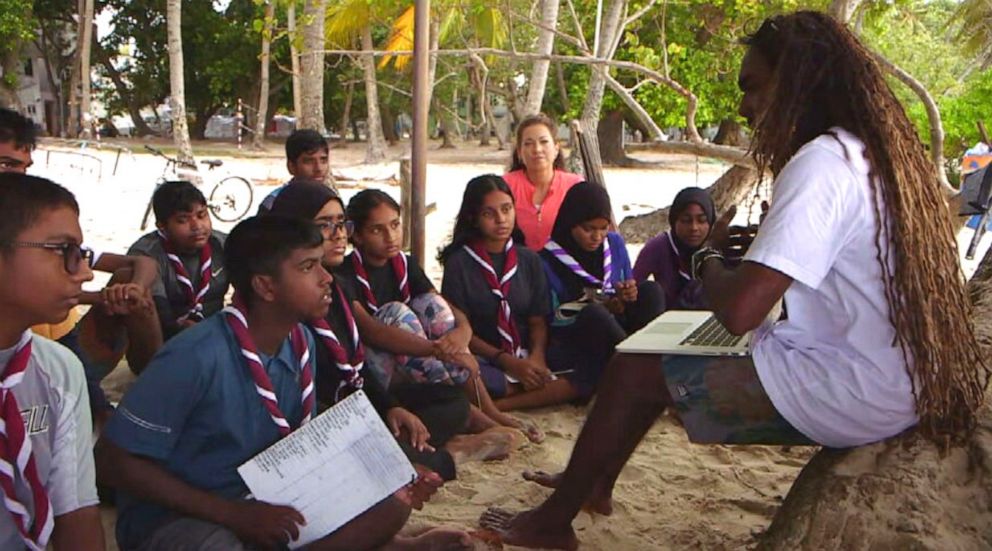
Research has previously shown that a healthy coral reef can absorb 97% of wave energy, dramatically reducing erosion, and it's affordable, Naseem said.
"It's much cheaper than building a seawall. I think it costs something like $3,000 to grow a meter of sea wall where for the coral a meter of it is about $300, including monitoring and everything," she said.
Bebe Ahmed, founder of "Save the Beach," travels island to island in the Maldives with the mission of teaching kids about restoring and protecting coral. He told ABC News that his dream is to inspire young Maldivians to want to start their own projects to restore coral reefs.
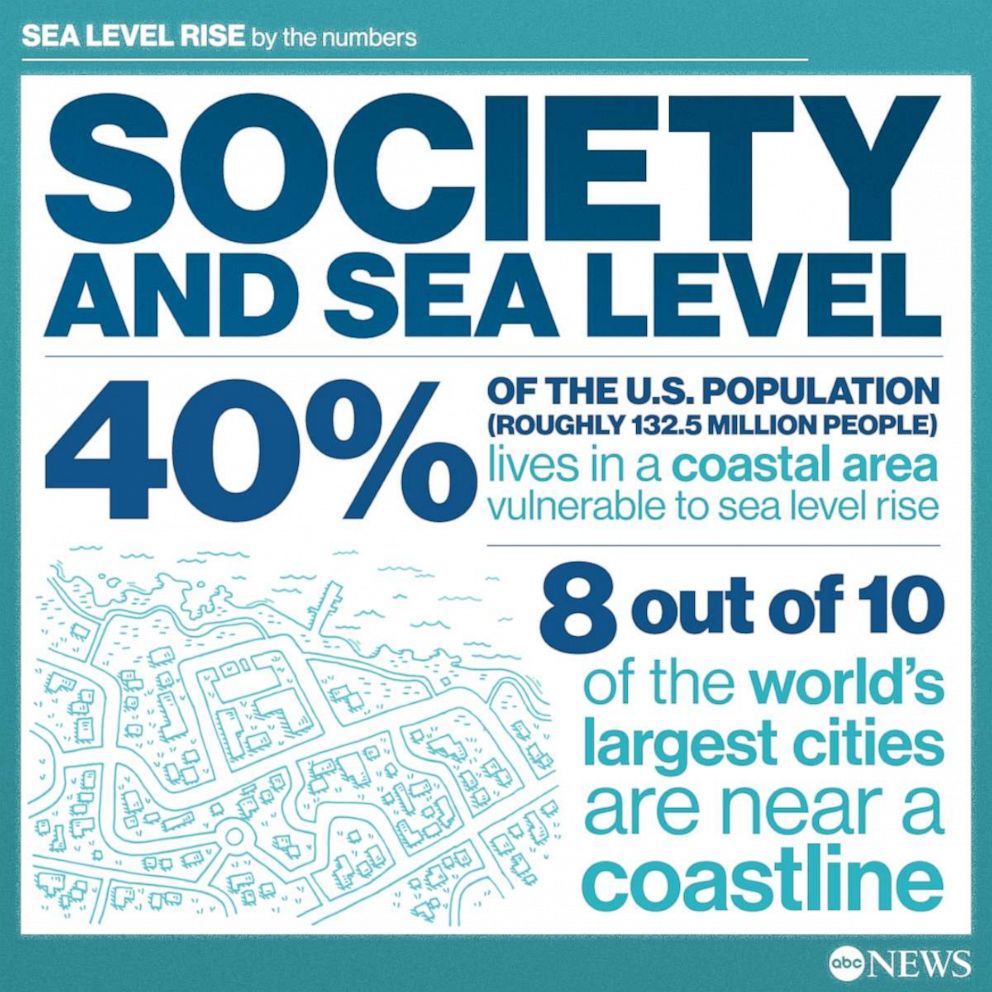
MORE: COP26 updates: 'America showed up,' Biden says of time at summit
What's next in the fight?
Technology, like 3D-printed coral structures or a floating city, may have to be part of the solution.
The Maldives is home to the Modular Artificial Reef Structure, or MARS, a coral-forming project on the resort island of Summer Island. to the coral forming project, MARS. The project has 3D-printed bases that are placed in the water with transplant corals attached to them. The hope is that the system is designed with the specific needs of the coral farm in mind, providing a permanent structure for coral to grow.
In the late '90s, the Maldives began construction on the island of Hulhumale through the process of land reclamation. Hulhumale is 6.5 feet above sea level, more than double the height of Male, the current capital of the Maldives. It is possible this island may be a future site for relocation of Maldivians suffering from sea level rise. Maldivians call their manmade island the City of Hope.
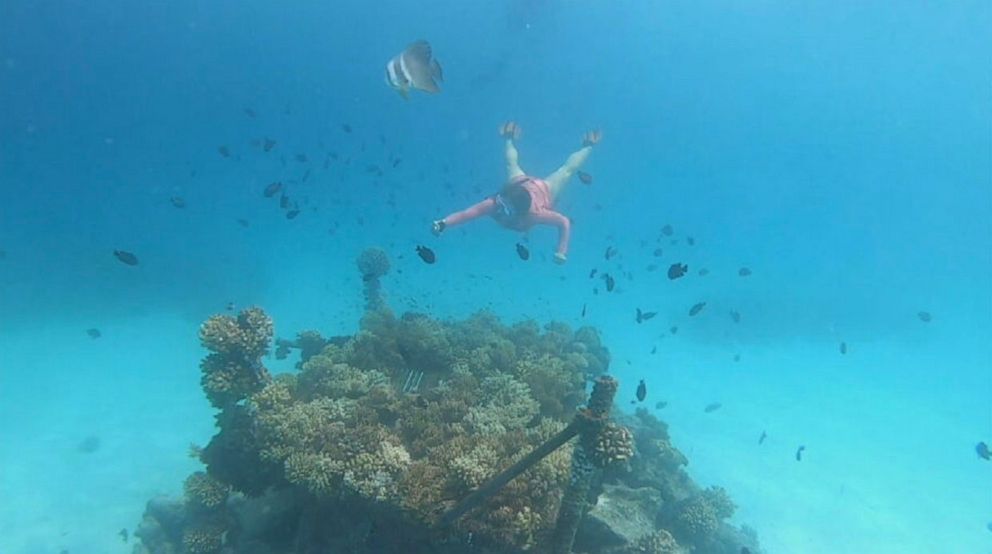
The future of the Maldives could also come in the form of a floating city. In 2022, just a few miles from the dense, capital city of Male, construction and assembly will begin on the world's first true floating city. The unique solution will not have to worry about sea level rise, because it will always be on top of the sea.
The project is being developed and led by Dutch Docklands in the Netherlands. Lead architect Koen Olthuis gave ABC News an inside look at how the floating city is designed and what it should eventually look like.
MORE: India's addicted to coal. But for how much longer?: Reporter's Notebook
The floating city has a unique pattern, modeled after the brain, both human and coral.
The entire city will shift up and down on a pile drilled into the sea floor. It will also take advantage of its environment to better provide for those living on the floating city.
"By being on the water we want to take advantage of the water -- and using the coolness of the water -- so these are water-cooled cities, for which you take cool water outside the atoll and pump water through the route and activate the air conditioning systems," Olthius said.
Since the floating city is sustainable and leaves no footprint, Olthuis called the floating cities "scarless" and said they are "renting space from nature."
Related Topics
- Climate Change
- Work & Careers
- Life & Arts
Become an FT subscriber
Try unlimited access Only $1 for 4 weeks
Then $75 per month. Complete digital access to quality FT journalism on any device. Cancel anytime during your trial.
- Global news & analysis
- Expert opinion
- Special features
- FirstFT newsletter
- Videos & Podcasts
- Android & iOS app
- FT Edit app
- 10 gift articles per month
Explore more offers.
Standard digital.
- FT Digital Edition
Premium Digital
Print + premium digital, weekend print + standard digital, weekend print + premium digital.
Today's FT newspaper for easy reading on any device. This does not include ft.com or FT App access.
- 10 additional gift articles per month
- Global news & analysis
- Exclusive FT analysis
- Videos & Podcasts
- FT App on Android & iOS
- Everything in Standard Digital
- Premium newsletters
- Weekday Print Edition
- FT Weekend Print delivery
- Everything in Premium Digital
Essential digital access to quality FT journalism on any device. Pay a year upfront and save 20%.
- Everything in Print
Complete digital access to quality FT journalism with expert analysis from industry leaders. Pay a year upfront and save 20%.
Terms & Conditions apply
Explore our full range of subscriptions.
Why the ft.
See why over a million readers pay to read the Financial Times.
International Edition
As summer nears, state tourism businesses pin hopes on winning more Pure Michigan funding
As Michigan gears up for another summer tourism season, businesses are hoping to cash in on what they expect will be strong demand throughout the state.
On Mackinac Island, visitors will notice numerous changes, including a two-year restoration at the Grand Hotel and the reopening of the Inn at Stonecliffe following a two-year, $30 million, property-wide transformation. In the Traverse City area, four hotels are expected to open in the next year to accommodate additional out-of-town guests in the popular tourist spot along Lake Michigan.
Operators are hopeful the summer season will be better for tourism in the state after emerging from a mild winter that negatively impacted snow-related businesses, particularly ski hills and nearby lodging. Hospitality and tourism leaders, meanwhile, are seeking the funding they say the state’s Pure Michigan campaign needs to keep visitors — and revenue — flowing into the state.
“We have the best state and I know we have the best campaign,” said Justin Winslow, president and CEO of the Michigan Restaurant & Lodging Association. “We just need to make sure it's in front of as many eyeballs as possible.”
Pushing for promotion funds
Officials with Travel Michigan said earlier this month that results from the state’s Pure Michigan campaign show that travel is on par with pre-pandemic numbers and consistent with national trends. A group of hospitality and tourism leaders would like to keep that momentum going.
Earlier this year, the Michigan Hospitality & Tourism Alliance was formed from a collaboration of statewide and regional organizations seeking to boost funding for the state’s Pure Michigan campaign. The alliance is seeking $50 million for the fiscal year, which would more than triple the current funding.
“We as an industry maybe have become a little more disparate since the pandemic,” said Winslow, a founding leader of the alliance. “We all fought individual battles and had such an existential threat to hospitality, travel and tourism overall. We all went back to our own corners just out of survival instincts. And I don't think we were all communicating what we needed to for the success of all of us overall, and it shows up most notably in what happened to the Pure Michigan budget."
The effort has found some support. On Thursday, the Michigan House Appropriations Subcommittee on Labor, Economic Development, and Lifelong Learning, chaired by Rep. Will Snyder, D-Muskegon, proposed a $40 million budget for Pure Michigan.
Pure Michigan's tourism advertising funding has decreased to about $15 million from roughly $40 million during the past two budget cycles, Winslow said: “That's just far short, I think, of what's necessary to meet the demand out there and the infrastructure that we've created as a state.
“And so I think we're leaving a lot of money on the table for Michiganders by not investing more in the Pure Michigan tourism campaign. And the alliance is trying to create a more unified and hopefully powerful place to make that message heard.”
Earlier this year, Gov. Gretchen Whitmer proposed $20 million for the Make it in Michigan Competitiveness Fund “to build off the iconic Pure Michigan campaign, on top of the $15 million in existing funding for the program, with a focus on talent attraction, labor retention and relocating to Michigan.” It is unclear if any of those dollars would be spent on promotional spending.
The alliance also announced earlier this year the creation of a bipartisan, bicameral “Hospitality & Tourism Caucus" that will work with the alliance to better understand challenges and opportunities impacting the industry. Those members include state Sen. John Damoose, R-Harbor Springs; Sen. Kevin Hertel, D-St. Clair Shores; Rep. Will Snyder, D-Muskegon, and Rep. Nancy DeBoer, R-Holland.
“The travel, tourism and hospitality industry drives the Michigan economy, and nowhere is this more true than in my District in northern Michigan and the Eastern U.P.,” said Damoose, the caucus co-chair, in a statement. “Given the unique challenges faced by this industry in the past several years — from Covid to regulatory burdens — it is critical that legislators come together to help.”
A 2024 SMARInsights Advertising Effectiveness Research for Pure Michigan report released this month showed that Pure Michigan advertising influenced more than 1.5 million leisure trips to Michigan from the national, regional and in-state markets targeted by the campaign. The report showed that out of the $16.9 million spent on advertising in 2023, Michigan saw a return of $9.21 in state tax revenue for each $1 invested.
“I guess it just goes to show that if there’s less advertising, we’ll have to rely on other means to fight for potential business loss,” said Tim Hygh, CEO of Mackinac Island Tourism.
The campaign also has an impact for Metro Detroit, said Christopher Moyer of Visit Detroit, an alliance member: "Every dollar that comes from Chicago to Detroit is one dollar that didn't exist in our economy before but now is here."
Moyer said the requested $50 million is a small fraction of the state’s overall budget — $82 billion for the current fiscal year — and “returns 10X back for communities throughout the state, for small businesses, for union workers, for the hotel workers in the city of Detroit who are part of the Unite Here labor union. They go to work because of visitors.”
Investing in upgrades
On Mackinac Island, businesses are hoping for another strong year when the island opens in May. Among the latest projects is the $30 million transformation of the Inn at Stonecliffe. The property will welcome guests starting in June.
The former mansion, built in 1904, and its 150-acre estate have had numerous uses over the years, including as a ski resort, college and hotel.
The Pulte Family Charitable Foundation took ownership of the property in fall 2022, closed it and restored the mansion, refreshed the summer house and added three three-bedroom cottages and a fourth one-bedroom cottage, said Kevin Doyle, the foundation's chief operating officer.
“All the rooms are kind of a custom bespoke feel,” he said. “In the mansion, there's 16 rooms. Every one of them is different. The summer house, there's 32 rooms. Every floor has a different feel. The mansion is more of a romantic charm feel. And the summer houses is a little brighter family, cheerful feel, if you will.”
The foundation also added a wellness center, two pools, a barbecue pavilion and a four-season event venue overlooking the Straits of Mackinac. The foundation acquired the nearby apple orchard and plans to offer beekeeping lessons and apple picking, Doyle said.
In Grand Traverse County, four hotels are expected to open this year or early next year, including an Avid hotel and a Fairfield Inn, said Trevor Tkach, president and CEO of Traverse City Tourism.
“I think that’s the testament to the commitment and the belief that demand will continue to grow for destinations like Traverse City,” he said. The area held its first International Fireworks Championship in 2023, and will expand this year as a two-day event. Another draw is the nearly 50 wineries in the region.
In Grand Rapids, Doug Small, president and CEO of Experience Grand Rapids, said they are projecting a 1.5% to 3% increase in visitors this year based on a leveling-off of room rates and occupancy: "What I like to say is, 'let's manage expectations.' Because ‘22 and ‘23 were so good … You can't grow that every year. You can maybe maintain it. So we maintain it through this year, or even increase by 1%, that's still a really good year.”
At Brys Estate in Traverse City, Patrick Brys said his family-owned winery is pretty well-staffed for the summer season. The year-round staff hovers around 25 employees. At peak times, the winery employs about 100 people.
The 155-acre property includes a winery, 44 acres of grapes, a guest house and a "secret garden" with 6,000 lavender plants. Business at the winery is up from pre-pandemic levels, with 1,000 daily visitors during peak times.
“People coming up can choose from a lot of different activities as far as wine tasting or specialized wine tours that take people out in the vineyard on stretch golf carts we call our wine wagons,” he said. “Obviously, they can visit our secret garden and lavender operation. And there's picnic areas down there. They can browse a lot of the products that are made from all the distilling of the lavender oils.”
Staffing up for summer
Hiring is also on the minds of tourist destinations and seasonal venues throughout the state. Mackinac Island needs about 5,000 workers on the island every year, Hygh said, with about 1,200 coming to work through H-2B guest worker visa.
“Our members will put an enormous effort in to get by. I think we're going to be fine," he said. "There's nothing that sticks out this year that shows that we would be down, but we continue to just keep advocating and fighting for more H-2B visas. That’s a constant.”
At Rare Bird Brewpub in Traverse City, co-founder Tina Schuett said they are preparing for an influx of visitors as the weather warms. People are drawn to the food and beer scene as well as nearby natural attractions, such as Sleeping Bear Dunes.
To accommodate extra visitors, the pub will expand beyond its year-round staff of 30 to about 40.
“We hire some seasonal staff, usually younger people, high school or college filling some of those gaps that we need just kind of support staff,” Schuett said. “It’s really tricky getting all the staff that we need because everybody in this town is fighting for the same employees and also with COVID we saw a lot of people leaving the industry. "
Schuett’s looking forward to the stressful and exhausting busyness of the summer season, she acknowledged: “It's when we make our money for the year. Our staff love it because they make a lot of money and they do really well.”

COMMENTS
While the very survival of the Maldives remains dependent upon limiting the impacts of climate change, the majority of the country's 540,000 citizens rely on tourism as their main source of income.
This external shock underscored the fragility of the Maldives' economy, which is heavily dependent on tourism and highlighted the urgent need for economic diversification. Historically, fishing and agriculture were the main economic activities in Maldives. In 1980, both were contributing 35% of GDP together while the tourism contribution was 13%.
Strong recovery in tourism was highlighted in the latest edition of the World Bank's Maldives Development Update (MDU), which analyses recent developments and presents an outlook on the Maldivian economy. It finds that while the Maldives economy recovered sharply and external imbalances improved in 2021, the outlook remains uncertain given travel and commodity price concerns.
The economy is heavily dependent on tourism which has been the main driver of economic growth in Maldives and the dependence on tourism makes the country highly vulnerable to macroeconomic and external shocks. Commodity price volatility is exerting pressure on external and fiscal balances, through costlier imports and higher subsidies.
However, Maldives faces structural challenges due to heavy dependence on tourism and limited diversification. The country's import-heavy economy is grappling with external pressures and inflation caused by high global commodity prices, affecting public finances due to government subsidies aimed at curbing domestic price increases.
Like the rest of South Asia, the Maldives, too, have been adversely impacted by the economic fallout of COVID-19. This small archipelagic island country's output of goods and services or GDP is projected to shrink by a massive 30 percent this year, according to Fitch Ratings, because of its dependence on tourism that has had to shut down to battle the viral pandemic.
Therefore, small and tourism-dependent countries can view the pandemic as an opportunity to unleash the potential of tourism and pave the way for sustained growth going forward. Maldives: Setting the Bar High in Tourism. Maldives has been exemplary in its resilience and ability to recover. In 2021, visitor arrivals reached more than 80 percent ...
By N Chandra Mohan* Like the rest of South Asia, the Maldives, too, have been adversely impacted by the economic fallout of COVID-19. This small archipelagic island country's output of goods and services or GDP is projected to shrink by a massive 30 percent this year, according to Fitch Ratings, because of its dependence on tourism that has had to shut down to battle the viral pandemic.
Tourism accounts for 56.6 percent of its GDP, 59.6 percent of employment and 48.5 percent of the government's revenues excluding grants, according to the World Bank.
Beyond Tourism: The evolving narrative of Maldives' growth. The Covid-19 pandemic brought global tourism and travel to a standstill. Although the health impact of the pandemic has been fairly contained in Maldives, its economic consequences for the tourism-dependent economy have been devastating. To contain the spread of the virus, the ...
As tourism picks up again, Maldives steps up efforts to diversify its faltering economy. Maldives saw a 67.4% drop in tourist arrivals last year compared to the 1.7 million visitors it received in ...
As a tourism dependent country, the economy of the Maldives was severely affected due to the COVID-19 pandemic. With the complete shutdown of tourism for three months in 2020, forecasts by the Ministry of Finance anticipated a contraction in GDP in the range of -11.5 to -29.7 percent in a worst-case scenario for 2020.
The Maldives, a cluster of coral islands located in the Indian Ocean, depends heavily on tourism for its economy. According to the World Travel and Tourism Council, tourism made up for 58.3 ...
A World Bank report published on Maldives in October 2023 has highlighted how, due to heavily being dependent on tourism, Maldives also faces threats of macroeconomic and external shocks. "Overall, sustained growth performance driven by tourism in the last decade has significantly reduced poverty, and Maldives performs well on poverty outcomes ...
Economic Challenges. Nations heavily dependent on tourism face economic challenges, particularly vulnerability to fluctuations in tourism numbers due to factors like natural disasters, political unrest, or health crises. The Maldives, for example, despite welcoming tourists early during the pandemic, witnessed a notable decline in their GDP.
The Maldives' economy is heavily dependent on tourism, with the sector directly contributing to 40% of the country's GDP, 80% of its exports, and half of its total revenues. The COVID-19 pandemic brought global tourism and travel to a standstill, leading to a 67.4% drop in tourist arrivals and a 32.9% contraction in the economy, the deepest recession on record.
Maldives' dependence on tourism and fisheries means that the nation has a narrow economic base. Fisheries itself remains one of the biggest sources of employment, and 'fish and fish products' account for almost 98% of Maldives exports. Climate change impacts such as coral reef degradation, loss of biodiversity, and extreme weather ...
Economy. Since the 1970s the economy of the Maldives has developed rapidly. Annual growth of gross domestic product (GDP) has been high, averaging about 6 percent in the 2010s, and the gross national income (GNI) per capita—among the lowest in the world in the 1970s—reached the level of upper middle-income countries by the late 2010s. The economy is based on tourism, fishing, boatbuilding ...
The Maldives is an 820-kilometre-long chain of nearly 1,200 islands dotting the Indian Ocean. The nation has become one of the most popular luxury tourism destinations in the world because of its ...
MALE', April 13, 2022 — Maldives' economy, buoyed by a strong rebound in tourism, is projected to grow at 7.6 percent in 2022 and fully recover to pre-pandemic levels by 2023, but the country's high debt levels are a major concern, says the World Bank in its twice-a-year regional update. Released today, the latest South Asia Economic Focus Reshaping Norms: A New Way Forward projects ...
Employment within the tourism industry. The MBS, in a mid-2019 survey of all tourism resorts in the Maldives, showed that a total of 44,954 employees are on the payroll of 147 tourist resorts, with local employees accounting for 47 percent. Female employees however, accounted for only 10 percent of total employees, of which a mere 3 percent ...
Tourism is the largest industry in the Maldives, ... Development of the infrastructure in the Maldives is mainly dependent on the tourism industry and its complementary tertiary sectors, transport, distribution, real estate, construction, and government. Taxes on the tourist industry have been plowed into infrastructure and it is used to ...
Facing dire sea level rise threat, Maldives turns to climate change solutions to survive. The islands could be 80% uninhabitable by 2050 at current global warming rates. By Daniel Manzo, Ginger ...
The Chinese make up for the minor reduction in Indian tourists in the Maldives following the diplomatic row between New Delhi and Malé. February 07, 2024 05:33 pm | Updated February 16, 2024 08: ...
It is clear that the Maldives depends on tourism and that, until October 2023, India accounted for the lion's share of the number of tourists to the island state.
The landslide victory by Muizzu's People's National Congress in the tourism-dependent archipelago nation, south-west of India, has brought into focus the ongoing India-China rivalry in the region.
"The travel, tourism and hospitality industry drives the Michigan economy, and nowhere is this more true than in my District in northern Michigan and the Eastern U.P.," said Damoose, the ...